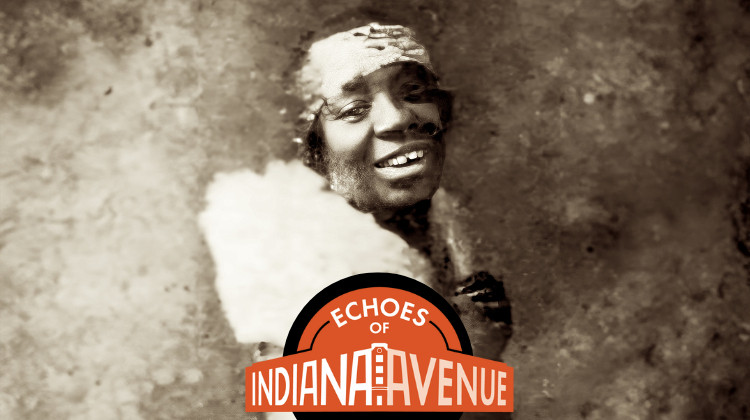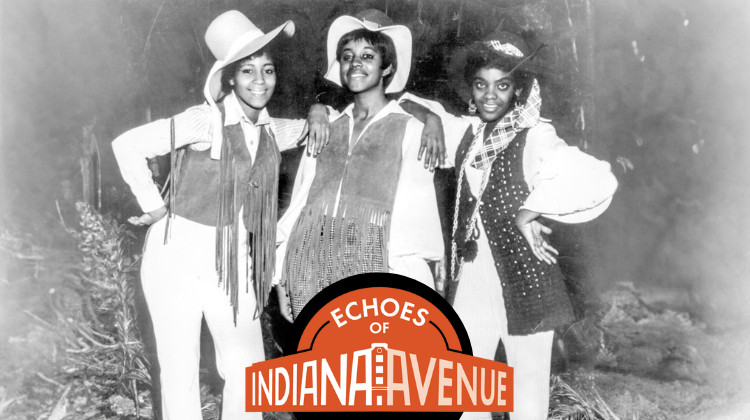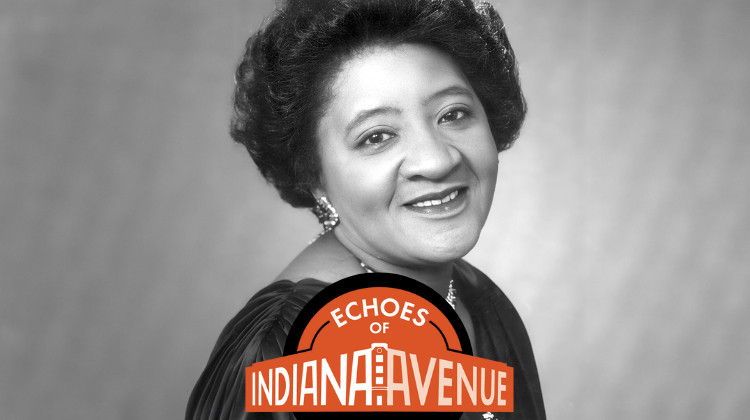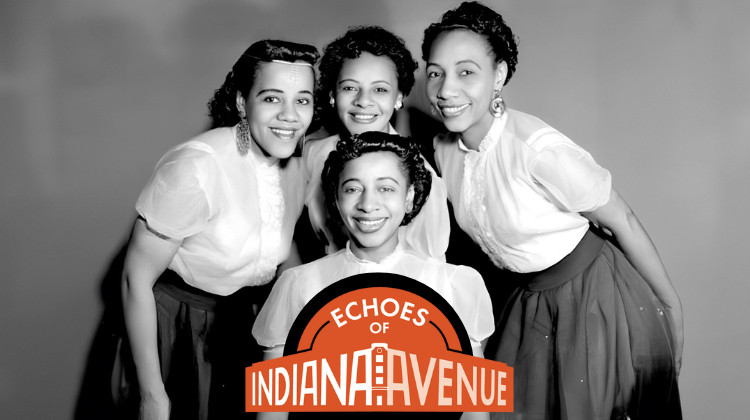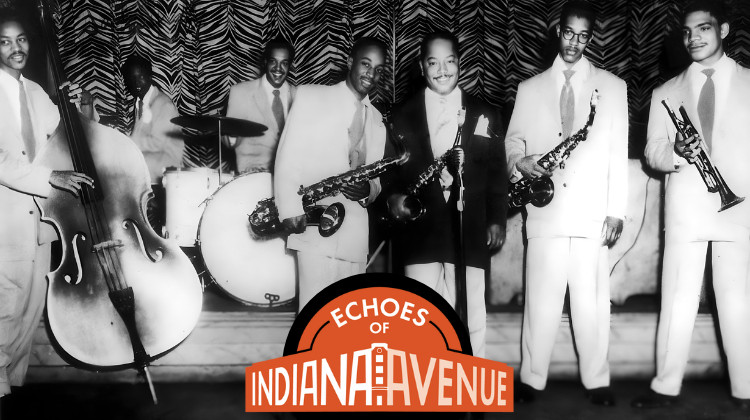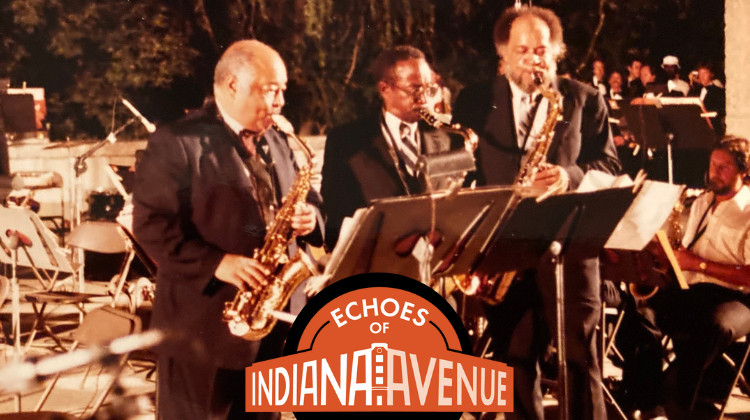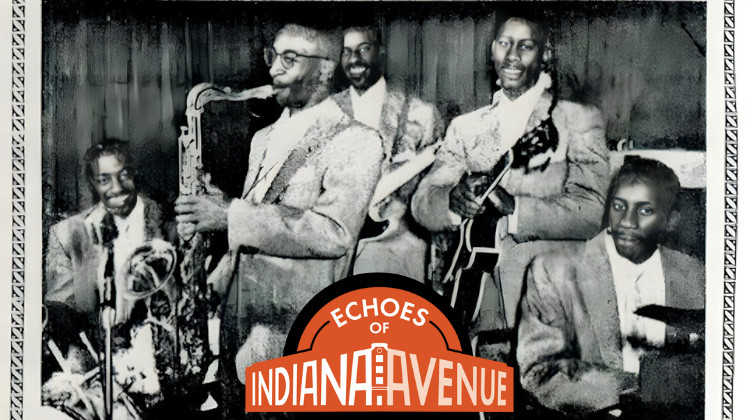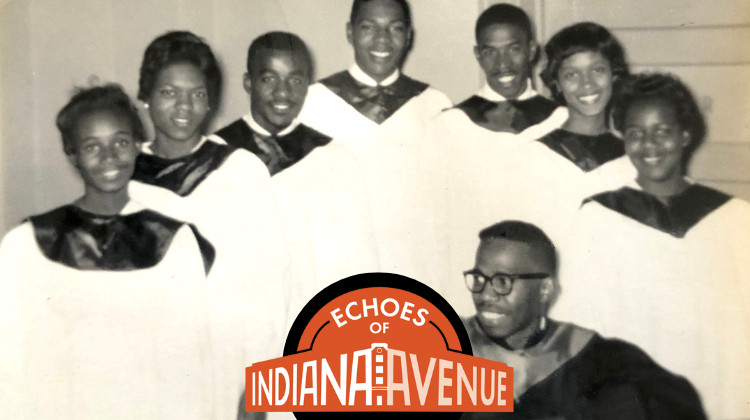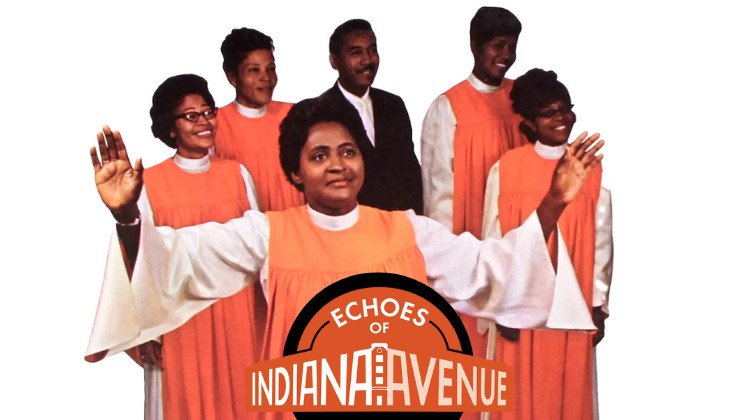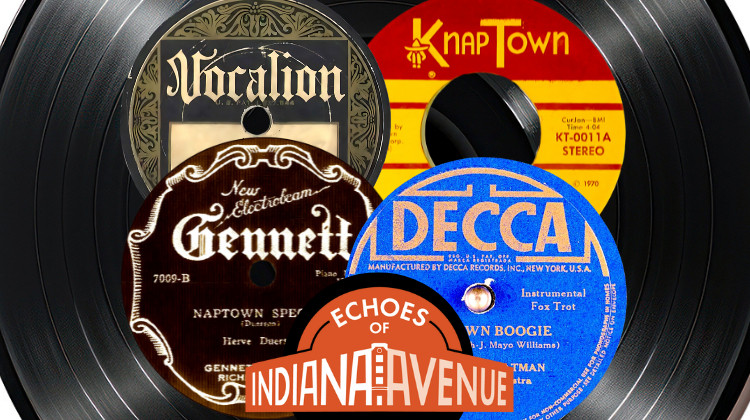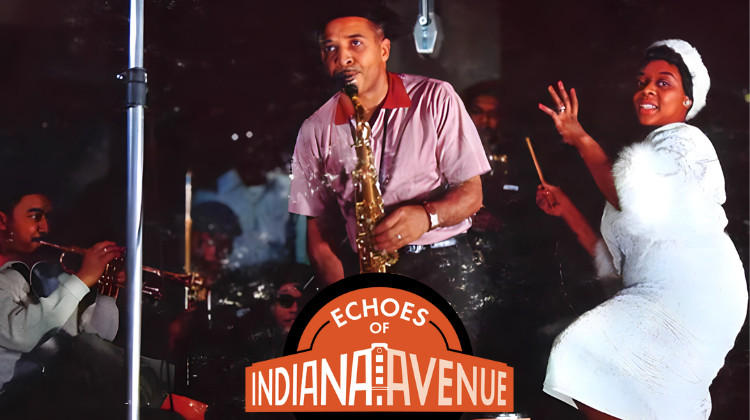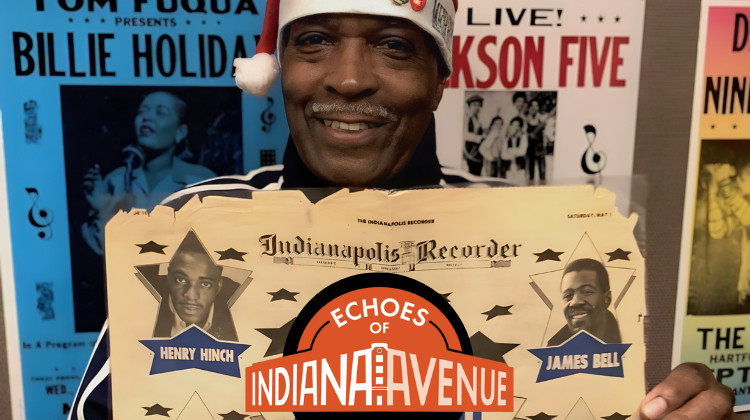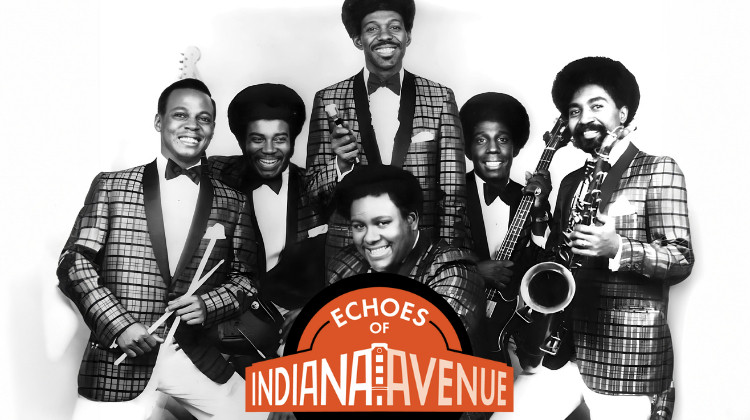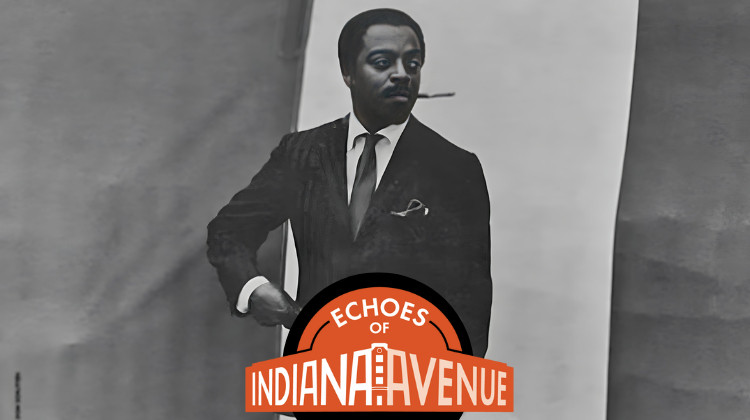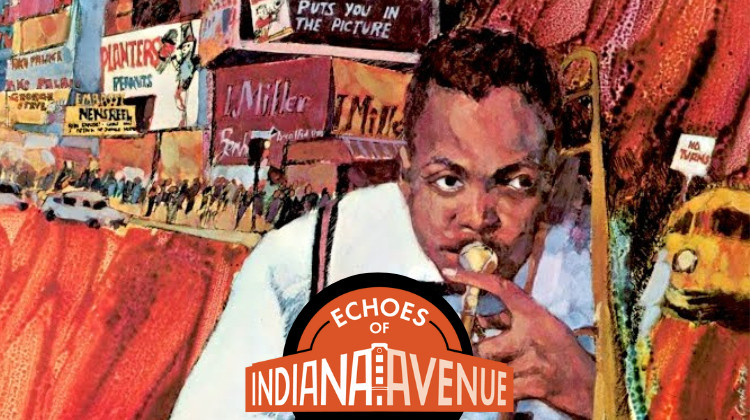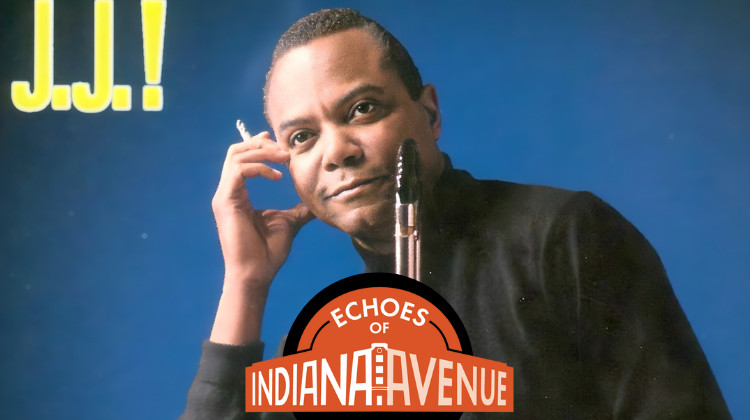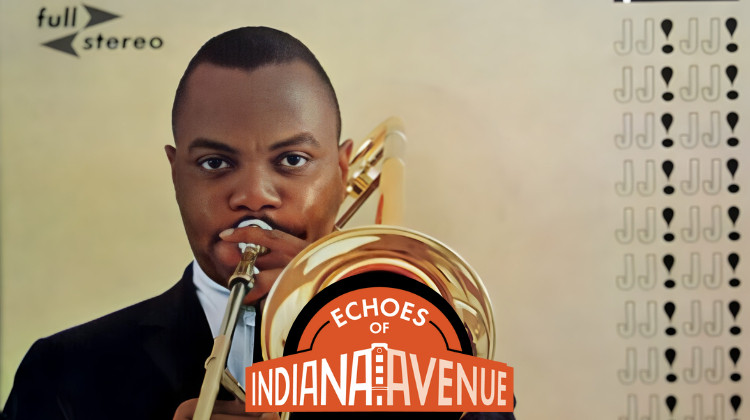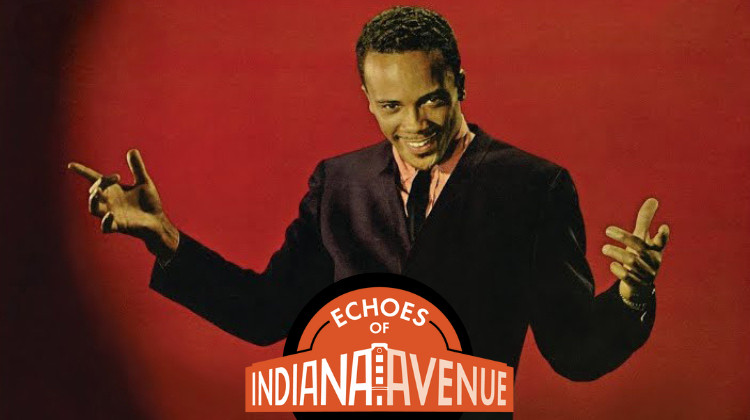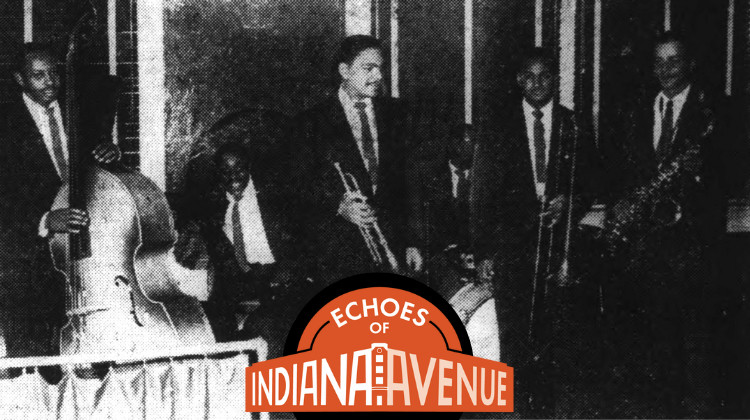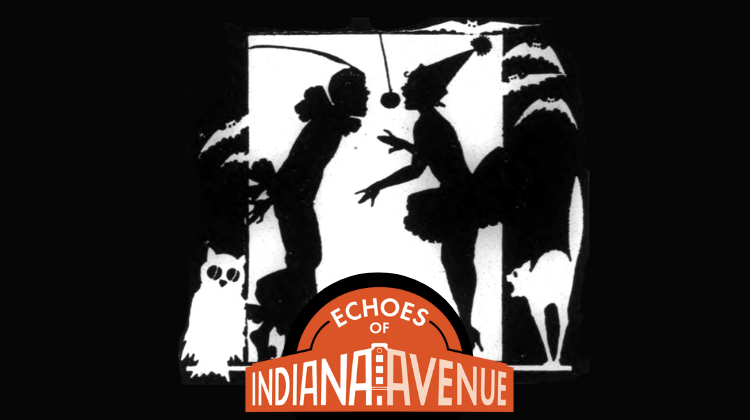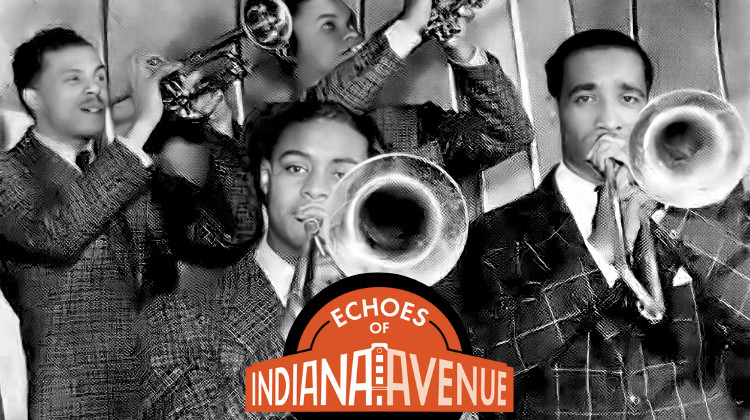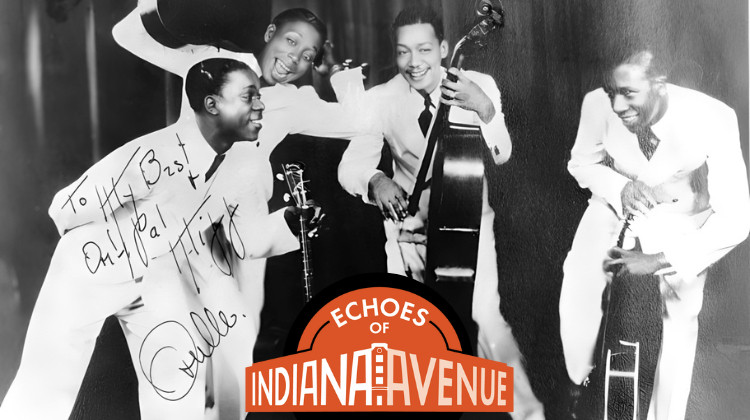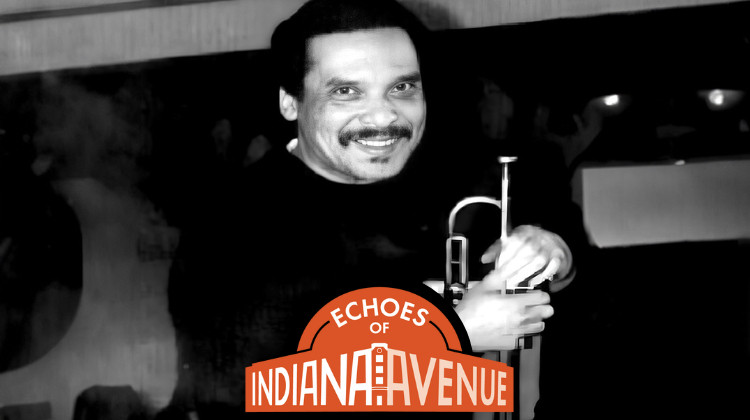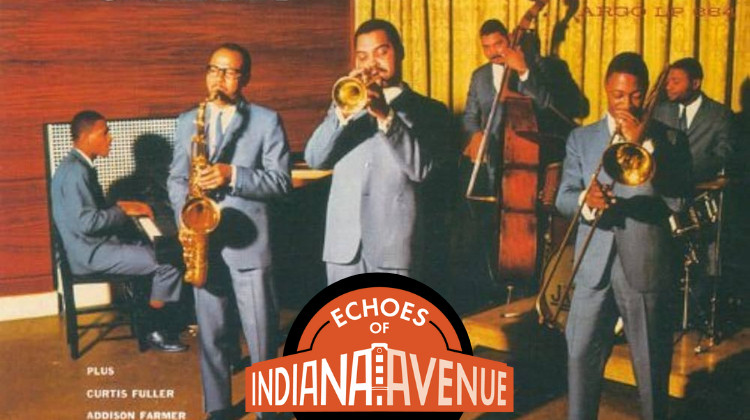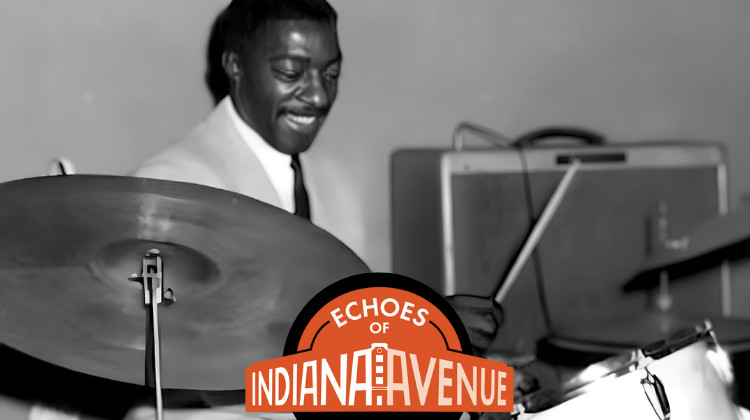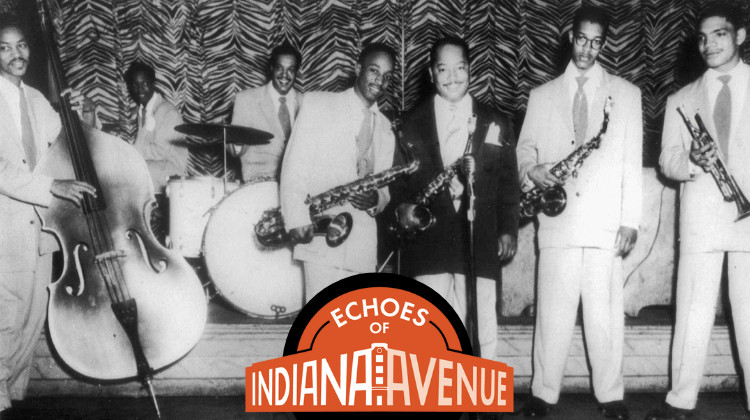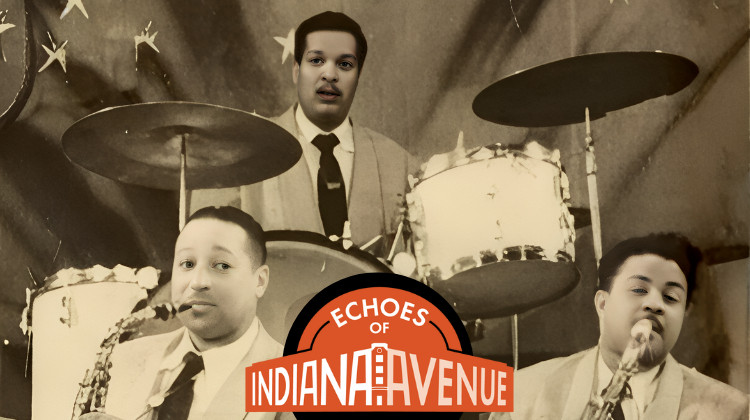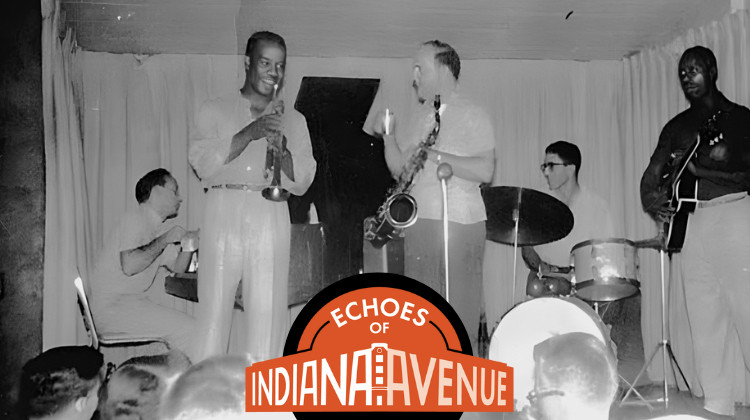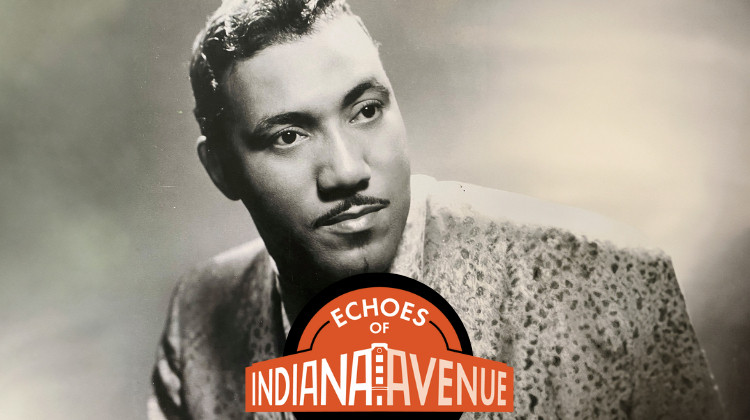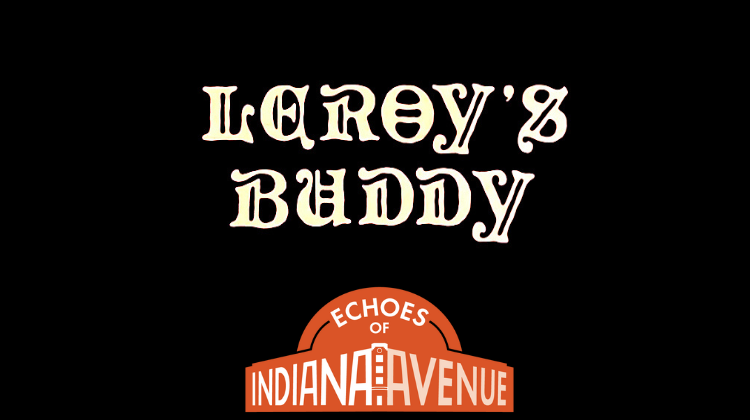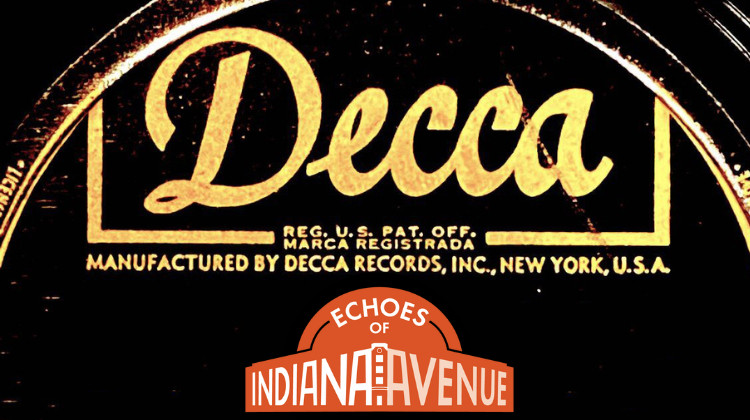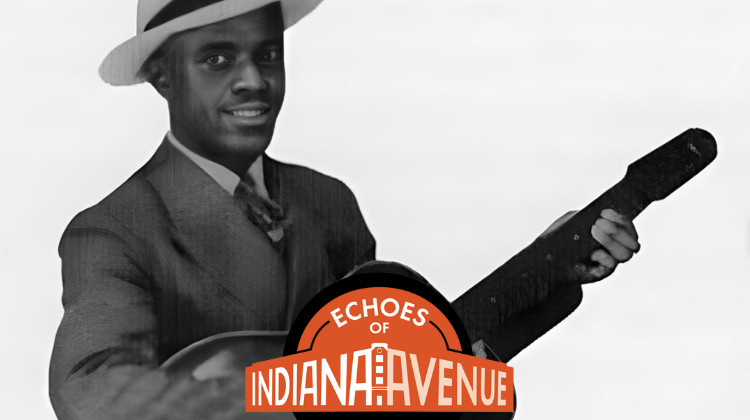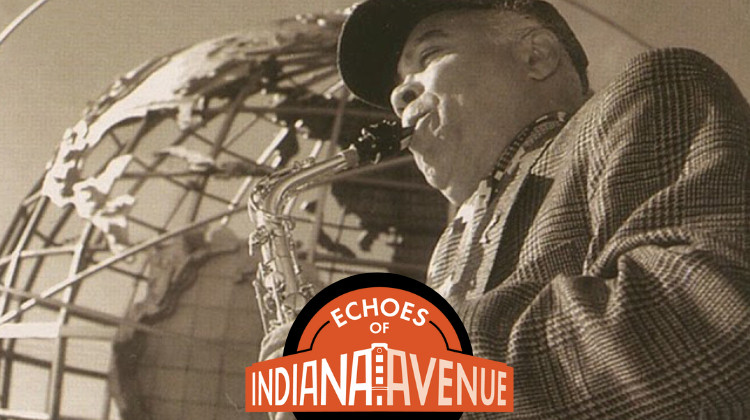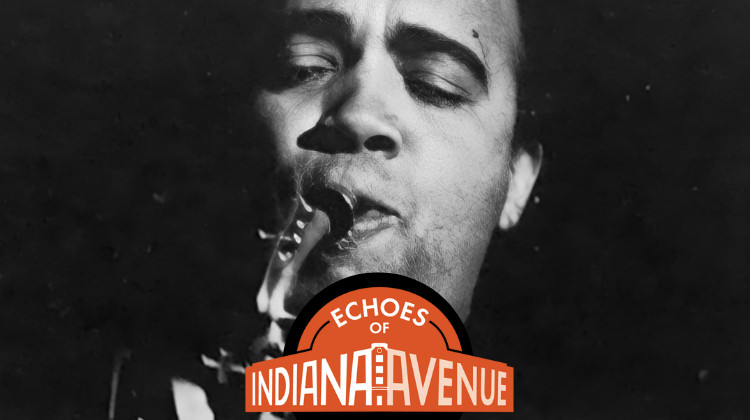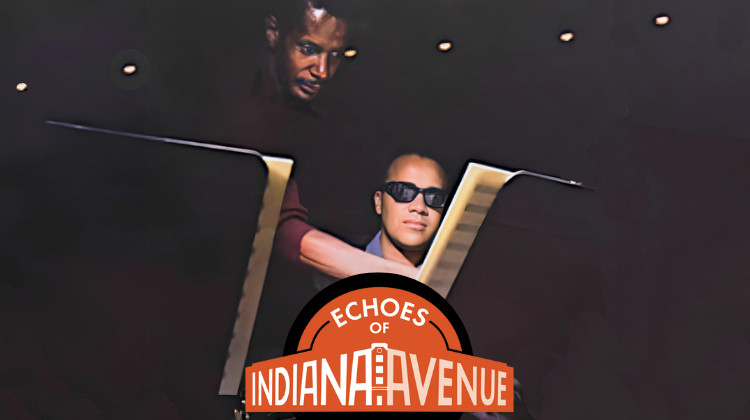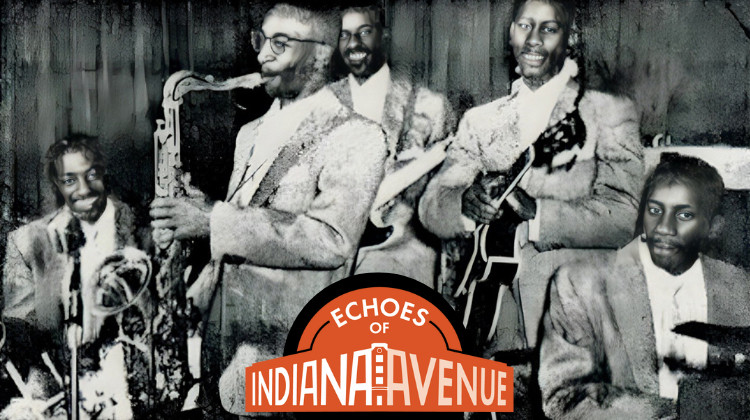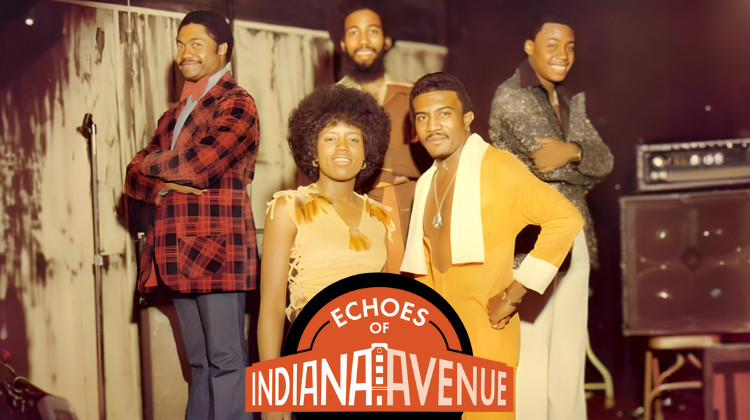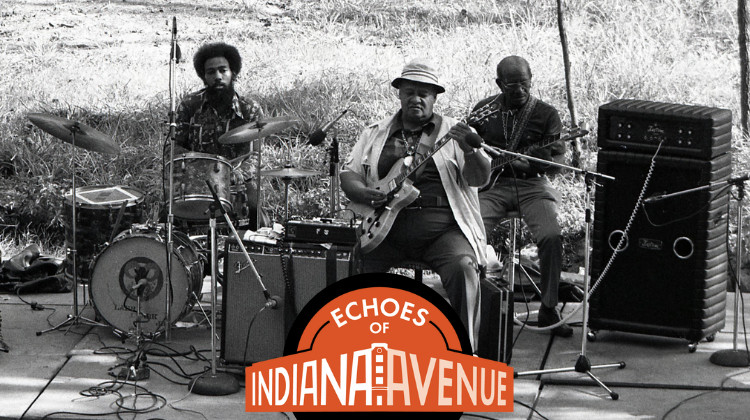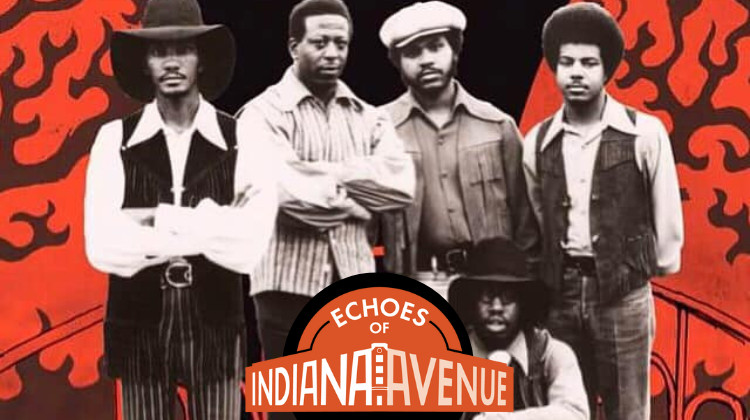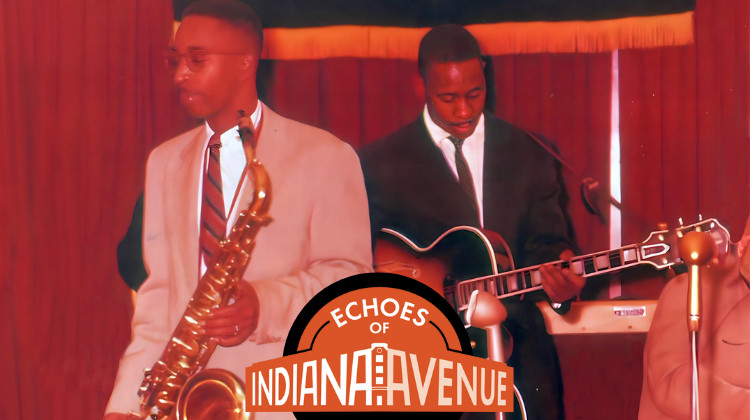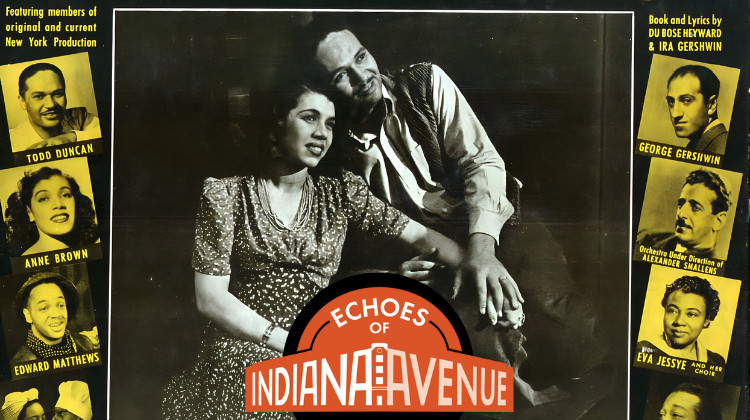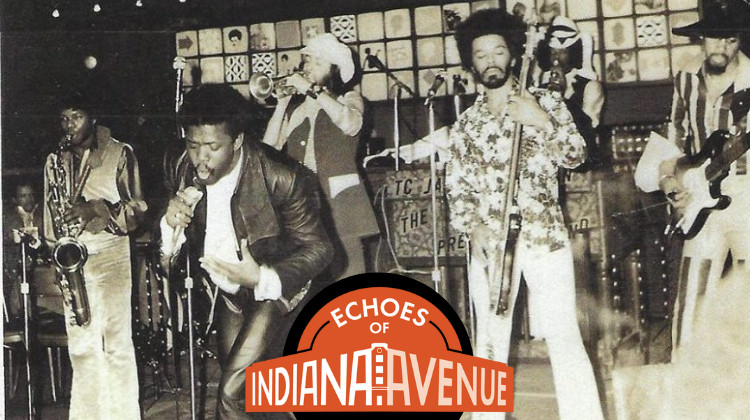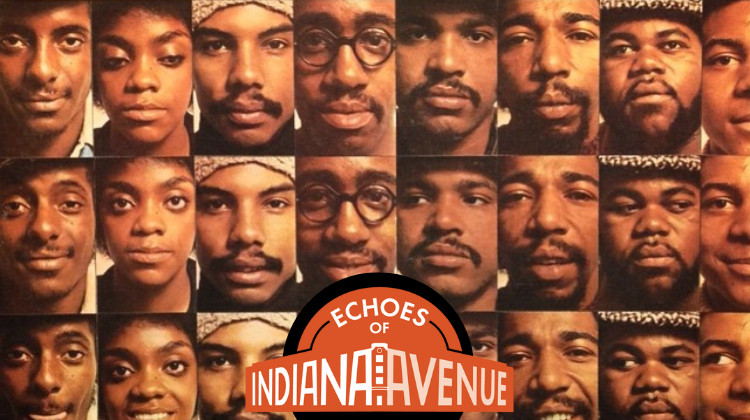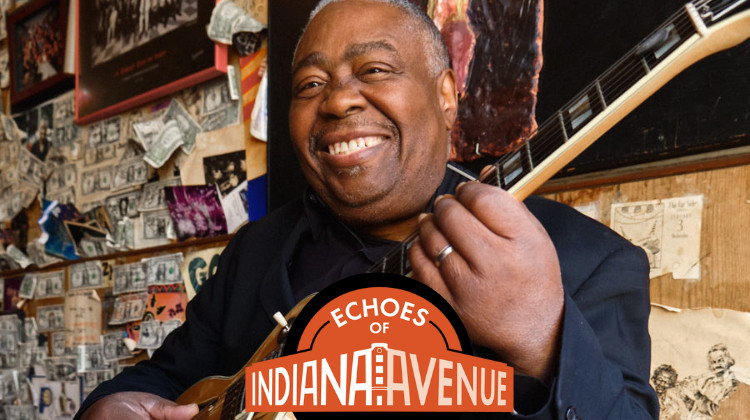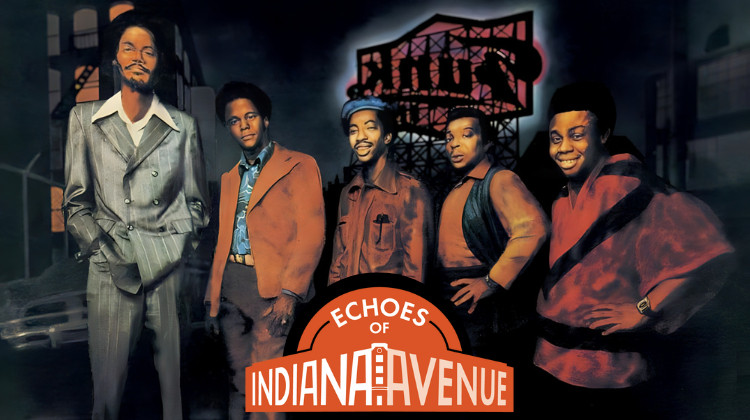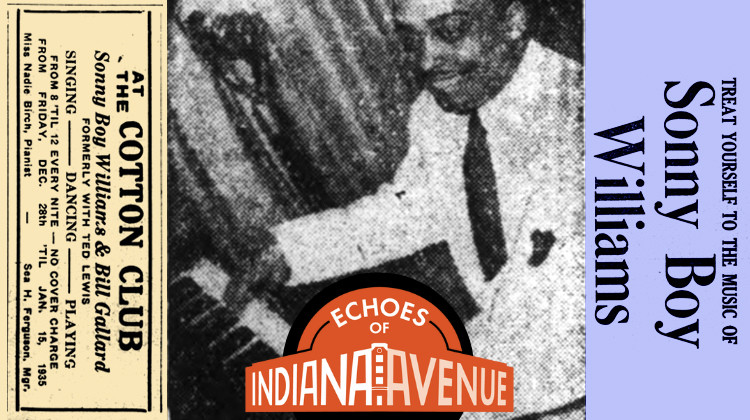Discover Echoes of Indiana Avenue
Echoes of Indiana Avenue

Echoes of Indiana Avenue
Author: WFYI Public Media
Subscribed: 12Played: 250Subscribe
Share
© 2025 WFYI Public Media
Description
Produced by Cultural Manifesto host Kyle Long and narrated by musician Herman Butch Slaughter, Echoes of Indiana Avenue is an audio documentary focused on the cultural achievements of Black artists and musicians from central Indiana.
222 Episodes
Reverse
Celebrate Women’s History Month with music featuring the early blues women of Naptown. During the 1920s and ‘30s, Indiana Avenue was a Mecca for blues music, thanks in part, to the legendary Indianapolis blues duo of Leroy Carr and Scrapper Blackwell. Women also played a large role in the early Naptown blues scene, including Alura Mack, Bessie Brown, Laura Smith, and Nina Reeves, her 1923 single “Indiana Avenue Blues” was among the first wave of blues records released.
Celebrate Women’s History Month with music from the soul women of Indiana Avenue.
From the 1950s to the 1970s, R&B, soul, and funk music flourished in the nightclubs of Indiana Avenue. Women played a large role in the Naptown soul scene, from girl groups including The Indy’s and The Pearls, to solo singers like Johnnie Mae and Lois Blaine.
Hear music from Debbie Nelson, Pam Tanner, Elaine Livingston, Josephine Cheatham, Care Package, Charlotte Bailey and more.
Celebrate Women’s History Month as we look back at Hazel Johnson’s Women in Jazz festival. The festival ran from 1986 to 1991 at the Madam Walker Theatre and featured many important women from the Indianapolis jazz scene, including Flo Garvin, Aretta La Marre, Mary Moss, Cherryl Hayes, Vickie Daniels, Anita Walker, Brenda Walls, Margaret Floyd, Cyann Proffitt, Salathiel Latrell, and others. Listen to music from artists who performed at the festival, including never-before-heard live recordings of Hazel Johnson.
Johnson started the Women in Jazz festival, to provide young and veteran women an opportunity to perform together. In a 1987 article published by the Indianapolis Star, Johnson said, “For many years men have dominated the jazz field. We feel the time is right for women to step out and receive the recognition we’ve been told we deserve.” The first Women in Jazz festival was held on October 12, 1986 and was hosted by the legendary Indianapolis broadcaster Barbara Boyd.
Johnson was born in Indianapolis in 1944. She grew up in the Avenue neighborhood and attended Crispus Attucks High School. Johnson began singing as a child. By age 14, she was performing professionally with the Naptown bandleader Larry Liggett. During her long career, Johnson played at many Avenue venues and she performed with many significant Indianapolis musicians, including Pookie Johnson, Jimmy Coe, Mel Rhyne, Thurston Harris, Carl Bailey, Johnny Dial, Errol Grandy and many more.
During her final years, Johnson spent much of her time managing the Inner-City Music School, a program she co-founded in 1994 with her husband Mack Strong. The school provided free music education for Indianapolis youth. Johnson’s contributions to jazz music were honored in 2007, when she was inducted into the Indianapolis Jazz Hall of Fame. Hazel Johnson died in 2011. She was 67 years old.
Celebrate Women’s History Month with music from The Hampton Sisters, a legendary Indianapolis jazz quartet featuring Dawn, Virtue, Carmelita, and Aletra Hampton.
They were born in Middletown, Ohio. Their birth dates spanned from 1915, when Aletra was born, to 1928, when Dawn, the youngest sister, was born. Their parents, Deacon and Laura Hampton, were both musicians. They had 12 children and together, they toured across the country as the Hampton Family Band. The experience they gained as children would serve them well later in life, as several members of the family pursued music as a professiom, including Slide Hampton, who became a world-renowned trombonist and arranger.
In 1938, the Hampton Family settled in Indianapolis. During the 1940s and ‘50s the Hampton family band were stars on the Avenue. They appeared at local clubs including George’s Bar, Walker Casino, Rum Boogie, Sky Club, Cotton Club, Paradise, Sunset Terrace, and the P&P Supper Club. The Hampton Family also performed at legendary venues outside of Indianapolis, including the Apollo, Carnegie Hall, and the Savoy Ballroom. The Hampton Sisters formed as an independent band during World War 2, when many male musicians were serving in the Armed Forces.
Explore the music of Arthur “Montana” Taylor, an important blues and boogie-woogie pianist who performed on Indiana Avenue during the 1920s. Montana is best known for a series of recordings he made in 1929 with the Vocalion Record Company. Among those recordings was an instrumental composition titled “Indiana Avenue Stomp”.
Very little is known about Montana Taylor’s early life. Some sources say he was born in Indianapolis in 1903, others list his place of birth as Butte, Montana. In a 1947 interview with Jazz Record magazine, Montana recalled growing up in Indianapolis. He began playing piano at 16 and by the age of 20 he was performing on the Avenue. Montana worked in Avenue venues including the Golden West Cafe and the Hole in the Wall. Montana was discovered by Vocalion Records while performing on the Avenue, when the label’s Indianapolis talent scout, John Guernsey, spotted Montana playing in a neighborhood bar.
During his career as a recording artist, Montana cut over a dozen tracks, including instrumental compositions and collaborations with blues singers Chippie Hill and Lil Johnson.
Listen to the final episode in a three-part series exploring the complete works of Alonzo "Pookie" Johnson, a legendary Indianapolis jazz saxophonist. Johnson was a veteran of the Avenue music scene and performed with many legendary Naptown jazz musicians, including Wes Montgomery and Freddie Hubbard.
On this edition, we’ll share music from Johnson’s 1996 album “Legacy” and his 2003 recording with The Hampton Sisters.
Listen to the second episode of our three-part series exploring the complete works Alonzo "Pookie" Johnson, a legendary Indianapolis jazz saxophonist.
On this edition, we’ll share rare and unreleased recordings featuring Johnson’s work with Uncle Funkenstein, Jimmy Coe, Billy Wooten, and Steve Allee.
Enjoy the first in our three-part series on the complete recordings of the late Alonzo “Pookie” Johnson, a legendary Indiana Avenue jazz saxophonist. This episode explores his early recordings.
Many local jazz fans consider Johnson to be one of the greatest saxophonists in Indianapolis history. During his six-decade career, Johnson performed with the greatest jazz players in Naptown, including Wes Montgomery, Slide Hampton, Jimmy Coe, Carl Perkins, Virgil Jones, David Baker, Errol Grandy, Freddie Hubbard, and many more.
Johnson was born in Indianapolis in October 1927. He studied music at Crispus Attucks High School, and the Jordan Conservatory. Johnson was a veteran of the Avenue club scene, performing at legendary venues such as the Sky Club, George’s Bar, The P&P Club, Henri’s, the Golden West, Sunset Terrace, and the British Lounge.
Join us for a remembrance of Rev. Dennis H. Freeman, an important figure in Indianapolis gospel music. Freeman passed away on January 15, 2025, at 84. Listen to a 2021 interview WFYI’s Kyle long recorded with Freeman, along with rare recordings of his music.
Rev. Dennis H. Freeman was a keyboardist, composer, arranger, bandleader, and choir director. In a monumental career, that stretched over eight decades, Freeman performed alongside the greatest names in gospel music, including James Cleveland, Dorothy Love Coates and the Gospel Harmonettes, The Caravans, Raymond Raspberry, The Mighty Clouds of Joy, Dorothy Norwod, The Soul Stirrers, The O’Neill Twins, and many others.
Freeman began working professionally in music as a teenager in the 1950s, playing organ at churches around the Indiana Avenue neighborhood. In 1959, he formed the Freeman Singers, a talented ensemble of singers that included the Indianapolis jazz vocalist Everett Green.
By the 1960s, Freeman had become a fixture of gospel music in Indiana. Freeman took part in many historic events in Hoosier gospel music, including Mahalia Jackson’s 1966 concert at Clowes Hall, and the first Indiana Black Expo in 1971.
Freeman’s music was heard across the country, on the many albums, singles and tapes he released.
Celebrate Martin Luther King Jr. Day, with an hour of gospel music from artists who performed on the Avenue, as we explore the connection between gospel music and the struggle for civil rights.
Also hear an interview with the Indianapolis-based historic preservationist Claudia Polley, she attended King’s 1959 speech in the Avenue neighborhood.
Gospel music played a profound role in the civil rights movement, serving as both a source of spiritual nourishment and a rallying cry for social change. Enjoy music from local and national artists, including The Wandering Travelers, Staple Singers, Sister Rosetta Tharpe, Mahalia Jackson, Dorothy Love Coates, and more.
For nearly 100 years, the term Naptown has been used as a nickname for the city of Indianapolis. The origin of the term Naptown has been a subject of debate for many decades. While the exact origins may never be known, the usage of Naptown was popularized on Indiana Avenue, and the name was spread nationally by local blues and boogie-woogie musicians.
This week on Echoes of Indiana Avenue, listen to music celebrating Naptown from local jazz, blues, and soul musicians.
Explore the life and music of saxophonist Eddie Chamblee, best known for his work in jazz and R&B music. Chamblee worked with many legendary performers, including Lionel Hampton, T-Bone Walker, Memphis Slim, and Dinah Washington. In fact, Chamblee was married to Dinah Washington in 1957.
Eddie Chamblee was born, in Atlanta, Georgia in 1920. By 1928, he was living in Indianapolis. His father, Robert Chamblee, was president of the Citizens Life Insurance Company. Their offices were located at 229 Indiana Avenue. After spending several years in Indianapolis, Chamblee’s family moved to Chicago. But Chamblee would eventually return to Indianapolis.
From 1953, to 1955, Chamblee held down a series of steady gigs at the Indiana Avenue club George’s Bar, where he became famous for playing his sax while swinging from the club’s rafters. During the 1950s, Chamblee performed at many Indiana Avenue venues, including Sunset Terrace, the Walker Theatre, and Ferguson Hotel.
In February of 2024, the legendary Avenue jazz drummer and entrepreneur Al Coleman passed away. This week on Echoes of Indiana Avenue, learn about Coleman’s life. Hear interviews with his brother, organist Phil Coleman, and his friend and bandmate, guitarist Steve Weakley.
Al Coleman was born in Indianapolis in 1927. He graduated from Crispus Attucks High School and studied music at the Jordan Conservatory. During his career, Coleman played with legendary Naptown musicians, including Wes Montgomery, Leroy Vineggar, and Jimmy Coe. But he’s best known for his work with the Three Souls, a jazz trio he co-founded during the late 1950s.
Coleman was also a celebrated entrepreneur. He owned a vending machine company, car wash, and the Cole-Smith Manor motel. But his best-known business venture was Al’s British Lounge, an Indiana Avenue jazz club. The British Lounge has been called the last great jazz club on the Avenue.
Coleman also gave back to his community. In 1978, he opened the Jacer Inn Family Retreat in Rochdale, Indiana. The Jacer Inn offered a variety of health and social services to inner-city residents.
Learn about the history of Indianapolis Recorder’s midnight Christmas benefit concerts at the Walker Theatre.
The concerts featured up to 60 acts and ran from midnight until 6 in the morning. Some of the greatest jazz, funk, and R&B musicians in Naptown performed at the midnight Christmas shows — including Wes Montgomery, Thurston Harris and Slide Hampton. But the entertainment wasn’t limited to music alone — there were drag queens, burlesque dancers, fire-eaters, snake handlers, body builders and comedians.
The concerts developed from the Indianapolis Recorder Cheer Fund. Established in 1929, the Cheer Fund was an annual holiday fundraiser that supported families in financial need. During the 1930s the Cheer Fund evolved into a benefit concert. These concerts attracted star performers, including the legendary tap dancer Bill “Bojangles” Robinson who performed at the Recorder’s 1938 benefit show. The Recorder's midnight Christmas benefit concerts thrived until the 1980s.
Listen to interviews with Indianapolis musicians and media personalities who performed at the Christmas benefit shows, including Henry Hinch, Josephine Cheatham, Rodney Stepp, Reggie Gammon, Debbie Nelson, Tyrone Caldwell, Richard Hamilton, Eunice Trotter, Geno Shelton and the late Joe Trotter.
On December 19 of 1970, the Indianapolis affiliate of the Southern Leadership Conference’s Operation Breadbasket held a “Black Christmas Parade” on Indiana Avenue. The parade featured marching bands, floats, and local celebrities. The grand marshal of the parade was the Soul Saint, an Afrocentric version of Santa Claus.
The “Black Christmas Parade” was part of a full day of events, that also included a keynote speech from Reverend Jesse Jackson. The day ended with a ”Black Christmas Party” at Foster’s Motor Lodge, featuring the greatest funk and soul bands in Indianapolis, including The Highlighters, The Moonlighters, The Turner Brothers, Indy 5, The Perfections, and others.
The purpose of the “Black Christmas Parade” was bigger than spreading holiday cheer. A spokesperson for Operation Breadbasket said the parade was created to raise awareness of the services and products available through local Black business owners, and to develop a sense of Black pride in the Indianapolis community.
This week on Echoes of Indiana Avenue, listen to a tribute to the “Black Christmas Parade”, featuring music from Indianapolis bands that performed at the event.
Listen to a tribute to the legendary jazz drummer Roy Haynes. He passed away last November at the age of 99. Hear classic jazz music from Haynes, featuring his work with the jazz masters of Indiana Avenue.
Roy Haynes was among the greatest and most influential drummers in the history of jazz music. Though Haynes spent the majority of his life in New York, he performed with many legends of the Indiana Avenue jazz scene, including Freddie Hubbard, J.J. Johnson, Larry Ridley, Bill Jennings, James Spaulding and more.
Haynes was born in Boston, Massachusetts in 1925. He began playing drums professionally, as a teenager during the early 1940s. His crisp and distinctive sound on the drums earned him the nickname “Snap Crackle”. By the end of the 1940s, Roy was playing with the greatest stars in jazz, including Lester Young, and Charlie Parker. In the following decades, Roy continued to be a dominating force in jazz, performing with Sarah Vaughan, John Coltrane, Thelonius Monk, Chick Correa, and dozens of other iconic jazz artists.
Listen to the final episode in our three-part series celebrating the 100th anniversary of the birth of trombonist J.J. Johnson, one of the greatest jazz icons to emerge from Indianapolis.
On this edition, we’ll focus on Johnson’s work in third stream music––a term coined by the conductor and composer Gunther Schuller in 1957 as a blend of classical and jazz music. Johnson was involved in the early development of third stream music and the genre left a lasting influence on his work.
Johnson composed several important third steam works, including “Perceptions”, a composition for solo trumpet and large jazz orchestra. The piece was commissioned by the jazz legend Dizzy Gillespie and recorded for Verve Records in 1961.
Hear excerpts from “Perceptions” and other third stream compositions by Johnson.
Listen to the second episode in our three-part series celebrating the 100th anniversary of the birth of trombonist J.J. Johnson, one of the greatest jazz icons to emerge from Indianapolis.
On this edition, we’ll focus on Johnson’s work in bebop and hard bop music. Johnson worked with many of the greatest legends in bebop, including Charlie Parker, Miles Davis, Max Roach, and many others.
Listen to the first episode in our three-part series celebrating the 100th anniversary of the birth of trombonist J.J. Johnson, one of the greatest jazz icons to emerge from Indianapolis.
On this edition, listen to a discussion recorded live at the Jazz Kitchen, featuring an all-star panel of jazz musicians discussing Johnson’s work.
The event was moderated by WFYI’s Kyle Long, and features commentary from musicians Phil Ranelin, Steve Turre, Rob Dixon, Steve Allee, and Pharez Whitted. Johnson’s widow Carolyn Johnson also made a special appearance onstage.
Listen to the music of Quincy Jones and the masters of Indiana Avenue jazz. Quincy Jones was a legendary producer, musician, composer, and arranger. He died earlier this month at the age of 91.
Jones worked with many of the biggest stars in popular music, producing and arranging music for iconic performers, including Michael Jackson and Frank Sinatra. As a composer, Jones broke racial barriers in Hollywood, becoming one of the first Black musicians to score soundtracks for major films and television programs. During his historic career, Jones received many accolades, including 28 Grammys, an Emmy, a Tony, and seven Academy Award nominations.
During his early years in music, Jones worked extensively, with musician from Indiana Avenue, including the Montgomery Brothers, Freddie Hubbard, David Baker, Pookie Johnson, Virgil Jones, J.J. Johnson, Carl Perkins, Leroy Vinnegar, and more.
It’s possible Jones himself played on the Avenue. From 1951 to 1953, Jones toured with the Lionel Hampton band as a trumpet player and arranger. During that time, the band played at Indiana Avenue’s Sunset Terrace, on Thanksgiving Day of 1952. In the liner notes for the Wes Montgomery anthology “In the Beginning,” Jones recalled sleeping on Montgomery’s floor when the Hampton band toured through Indianapolis.
Explore the music of the Indianapolis trumpet player Joe Mitchell. He performed with many legendary bandleaders including Ray Charles, Count Basie, Jimmy Coe, and Earl Bostic.
Mitchell was born in Youngstown, Ohio in 1929. By the 1940s, he was living in Indianapolis. Mitchell attended Crispus Attucks High School and by the age of 19 he was playing with the greatest jazz musicians in Indianapolis, including Pookie Johnson, Willis Kirk, Reginald Duvalle, Monk Montgomery, Carl Perkins and others.
Celebrate Halloween with a spooky playlist of music featuring artists who performed on the Avenue. From the Sunset Terrace to the Walker Theatre, Halloween was a big part of the Avenue nightlife scene. Every year, clubs across the neighborhood featured concerts, dances, and costume contests to celebrate the occasion. Join us for music featuring Ella Fitzgerald, Duke Ellington, Bessie Smith, Louis Armstrong, Cab Calloway, and more.
Listen to music from the trombonist, disc jockey, and bandleader Doc Wheeler Morin. Doc was a star of the Avenue music scene during the early 1930s. He was born in Franklin, Indiana in 1910, and grew up in Muncie. By age 18, Doc was living in Indianapolis, performing in the pit orchestra at the newly opened Madame Walker Theatre.
In 1935, Doc started his own orchestra. The band was a hit on the Avenue, playing at neighborhood venues including the Walker Casino, Dee’s Paradise, and the Trianon Ballroom.
During the late 1930s, Doc left Naptown for New York. He found success as bandleader for the Sunset Royal Serenaders, later known as the Sunset Orchestra. In 1941 they cut a series of recordings for RCA’s Bluebird label. Doc’s music influenced some of the biggest stars of big band music, including Tommy Dorsey.
We're looking back at the life and music of vocalist Jerry Daniels, a founding member of the world-famous Ink Spots.
The Ink Spots were founded around 1933 by four young Indianapolis singers, Deek Watson, Orville Jones, Charlie Fuqua, and Jerry Daniels. They would go on to become one of the most influential acts in American music, inspiring an entire generation of doo-wop, R&B, and rock and roll musicians. In 1989 the Ink Spots were inducted into the Rock and Roll Hall of Fame, the only Indianapolis act to receive this honor. Jerry Daniels left the Ink Spots in 1936, though his time with the group was short, he played a large role in establishing their unique sound.
Join us for music from Daniels, featuring his early work with the Ink Spots, and his last recordings during the 1980s.
This week we explore the music of the Naptown trumpet player Michael Ridley. Michael played with some of the biggest stars in American music, including Stevie Wonder, James Brown, Wilson Pickett, and Otis Redding. But he’s best known for his work in jazz. Michael performed with many jazz greats, from Archie Shepp to Jimmy McGriff.
Michael Ridley was born in Indianapolis in 1939. At that time, his family lived in Lockefield Gardens — a federal housing project located on the Avenue. Ridley attended Shortridge High School. He performed with the school band and studied music at the MacArthur Conservatory on Indiana Avenue. There was music in Ridley’s home too. His older brother, Larry Ridley, is a legendary jazz bassist known for his work with Thelonius Monk, Freddie Hubbard, Chet Baker, and others.
Listen to a tribute to the Philadelphia saxophonist and composer Benny Golson. He passed away on September 21st at the age of 95.
Throughout his career, Golson performed with legends of the Indiana Avenue jazz scene, including Freddie Hubbard and J.J. Johnson.
Hear music featuring Golson’s collaborations with Indianapolis jazz musicians, along with recordings of Golson’s music from notable Avenue jazz stars, like Wes Montgomery and Slide Hampton.
Listen to music from Paul Parker, an important Indianapolis jazz drummer. Parker was among the most respected drummers on the Avenue jazz scene. He was best known for his work with Wes Montgomery, but also performed with Freddie Hubbard, Larry Ridley, James Spaulding, Melvin Rhyne and many others.
Listen to the final episode in our two-part series exploring the music of Earl “Fox” Walker, a legendary Indianapolis jazz drummer.
On this week’s show, we’ll focus on Walker’s recordings with the Indianapolis music legend Jimmy Coe. During the 1950s, Walker performed regularly with Coe on Indiana Avenue. They were also featured on many recordings together, including The Students’ doo-wop ballad “I’m So Young,” a top 40 Billboard R&B hit in 1961.
For the next two weeks, explore the music of Earl “Fox” Walker, a legendary Indianapolis jazz drummer.
Walker worked with many local, and national bandleaders, including Tiny Bradshaw, Gene Pope, Buddy Bryant, and Jimmy Williams. But he’s best known for his recordings with the Jimmy Coe and Lionel Hampton bands.
Walker performed extensively on the Avenue, appearing at venues including Dee’s Paradise, Club Ebony, George’s Bar, the Defense Club, the Walker Theatre, Sky Club, Royal Roost, the P&P Club, and more.
Walker was born in 1921, and by the age of 19 he was known as one of the greatest jazz drummers in Indianapolis. Sadly, Walker’s life was cut short. He died at the age of 38. But he accomplished so much during his brief career.
On this week’s show, we’ll focus on Walker’s recordings with the Lionel Hampton band. He played with Hampton from 1946 to 1949. During that time, Hampton’s band also featured the Indianapolis jazz great Wes Montgomery on guitar.
Explore the music of “Mr. Trumpet” Roger Jones, a legendary Indianapolis jazz musician who performed with artists including Duke Ellington, Count Basie, Cab Calloway, Wes Montgomery, Sarah Vaughan and others. During the mid-20th century, Jones was considered the top trumpet player in Indianapolis.
Jones was born in Carbondale, Illinois in 1913. By the time he was a teenager, Jones was living in Indianapolis, studying music with Harold Brown at Crispus Attucks High School. Jones began perfprming professionally as a teenager with the Brown Buddies band, and he played some of his first gigs on the Avenue. During the late 1930s, Jones left Indianapolis with the Don Redman Orchestra, for the next decade, he worked regularly with the greatest icons of jazz.
Hear a tribute to the famed Indianapolis soul singer Jimmy Guilford, he passed away earlier this month.
Jimmy Guilford started his career singing doo-wop on the streets of Indiana Avenue. His talents would eventually carry him to the Apollo Theater in New York, the nightclubs of Las Vegas, and the recording studios of Detroit, where Jimmy cut a series of classic soul singles.
Guilford’s career in Indianapolis spanned over six decades of music making. He worked with some of the greatest music legends in Indianapolis, from the jazz icon Wes Montgomery to the rock and roll star Thurston Harris.
We’ll share a 2019 interview Guilford recorded with WFYI’s Kyle Long, along with rare singles he recorded with the Lamplighters and Four Sounds.
Listen to the final episode in a three-part series exploring the music of Little Bill Gaither, a legendary Indianapolis blues singer and guitarist. On this week’s edition, hear a selection of music from Gaither’s final recordings.
Gaither had a prolific career as a recording artist, cutting over 100 songs from 1935 to 1941. His music career was interrupted by the outbreak of World War II. Gaither was drafted in 1942, serving in the African American 1st Battalion of the 24th Infantry Regiment. Gaither spent his final years, working as a maintenance man for MCL Cafeteria. He died in Indianapolis on October 30th, of 1970.
The second episode in a three-part series exploring the music of Little Bill Gaither, a legendary Indianapolis blues singer and guitarist.
Gaither’s music was heavily influenced by the famous Indianapolis blues duo of Leroy Carr and Scrapper Blackwell. Gaither performed many of Carr’s songs and imitated the unique guitar style of Blackwell. When Carr died in 1935, Gaither began performing under the name “Leroy’s Buddy”, as a tribute to his friend.
On this week’s edition, we’ll focus on Gaither’s interpretations of Carr’s music.
For the next three weeks we'll explore the music of Little Bill Gaither, a legendary Indianapolis blues singer and guitarist.
Gaither was born in Kentucky in 1910. He spent his childhood in Louisville and moved to Indianapolis in the early 1930s. Gaither quickly found his place in the early Naptown blues scene, partnering with a local piano player named George “Honey” Hill”. They would go on to record dozens of classic blues records together.
Gaither left behind a large catalog of music. From 1935 to 1941, he recorded over 100 songs for labels including Decca and Okeh. Gaither’s music documented his life in Indianapolis, from the good times he had on the Avenue, to serious themes, like the outbreak of World War II, and the tuberculosis epidemic.
On this edition, listen to the early recordings of Little Bill Gaither.
Listen to the final episode in a three-part series celebrating the July birthday of the flutist and saxophonist James Spaulding, one of the greatest living legends of the Avenue jazz scene.
Spaulding is best known for his work as a sideman. He cut over 65 albums as a session player, including recordings with Louis Armstrong, Herbie Hancock, Freddie Hubbard, Max Roach, and others. But Spaulding has also worked extensively as a bandleader. On this week’s episode, hear music from Spaulding’s work as a session leader.
Listen to the second episode in a three-part series celebrating the July birthday of the flutist and saxophonist James Spaulding, one of the greatest living legends of the Avenue jazz scene.
On this week’s edition, hear music from Spaulding’s work in experimental jazz. During his historic career, Spaulding performed with icons of avant-garde music, including Sun Ra, Archie Sheep, Pharaoh Sanders, Sam Rivers, Leon Thomas and more.
For the next three weeks on Echoes of Indiana Avenue, we’ll celebrate the July birthday of the saxophonist and flutist James Spaulding, one of the greatest living legends of the Avenue jazz scene. Spaulding has performed with the greatest legends in jazz music, from Herbie Hancock to Louis Armstrong.
On this week’s edition, we’ll focus on Spaulding’s work for the famous Blue Note label. Spaulding was featured on over 20 classic Blue Note albums, working with star bandleaders like Freddie Hubbard, Wayne Shorter, Stanley Turrentine, Lee Morgan, Horace Silver, Grant Green, and many others.
Listen to the second episode in a two-part series exploring the complete recordings of Sonny Johnson, a legendary Indianapolis jazz drummer best known for his work with Wes Montgomery.
Johnson played with many legends of Indiana Avenue, including the Hampton family, Jimmy Coe, Mel Rhyne, David Baker, Freddie Hubbard, and many more. Johnson also toured across the country as a drummer for the Lionel Hampton Orchestra, and recorded in New York City with Quincy Jones.
On this week’s episode, hear live recordings of Johnson performing in Indianapolis with Wes Montgomery.
Listen to the second episode in our two-part series exploring the music of the Indianapolis jazz drummer Larry Clark.
Clark will share his thoughts on the destruction of Indiana Avenue and discuss his unique archive of cassette tapes. The collection features never-before-heard live recordings of Clark’s work with jazz greats including Floyd Smith, and James Moody.
Clark is a veteran of the Indianapolis jazz scene and he’s performed with dozens of Avenue jazz legends, including the Hampton Sisters, David Baker, Pookie Johnson, Steve Weakley, and many more. Clark has also played with jazz stars outside the Indianapolis scene, like Groove Holmes, Rusty Bryant, and David “Fathead” Newman.
In 2005, Clark’s work was honored by the Indianapolis Jazz Foundation, when he was inducted into the Indianapolis Jazz Hall of Fame. Clark remains active in the jazz scene today and currently serves as the president of the Indianapolis Musicians Union.
This week on Echoes of Indiana Avenue, listen to the first episode in our two-part series exploring the music of the Indianapolis jazz drummer Larry Clark.
Clark is a veteran of the Indianapolis jazz scene and he’s performed with dozens of Avenue jazz legends, including the Hampton Sisters, David Baker, Pookie Johnson, Steve Weakley, and many more. Clark has also played with jazz stars outside the Indianapolis scene, like Groove Holmes, Rusty Bryant, and David “Fathead” Newman.
In 2005, Clark’s work was honored by the Indianapolis Jazz Foundation, when he was inducted into the Indianapolis Jazz Hall of Fame. Clark remains active in the jazz scene today and currently serves as the president of the Indianapolis Musicians Union.
Join us for the next two weeks, as Clark shares his memories of working on the Avenue. We’ll also listen to never-before-heard live recordings from Clark’s personal collection, featuring his work with jazz greats including Floyd Smith, and James Moody.
This week on Echoes of Indiana Avenue, listen to a preview of the “Juneteenth Black Heritage Concert: Gospel and Blues – The Roots of it All”. It’s happening on June 16th at Indiana Landmarks.
Hear interviews with two of the concert’s performers, Lester Johnson and Debbie Nelson — both have deep connections to the blues and the Indiana Avenue music scene.
Bassist Lester Johnson is best known for his work with Ebony Rhythm Funk Campaign. Johnson played some of his earliest gigs with the Indiana Avenue blues great Harvey Cook, and Johnson’s uncle was the Indianapolis blues legend Guitar Pete Franklin.
Debbie Nelson is known for her work as a blues vocalist. She started her career singing on Indiana Avenue during the 1960s, and was offered a chance to perform in B.B. King’s band.
Saxophonist Alonzo “Pookie” Johnson is a legend of the Avenue jazz scene. Many local jazz fans consider Johnson one of the greatest saxophonists in Indianapolis history.
Johnson was born in Indianapolis in October 1927. He began performing locally as a teenager in the 1940s. Johnson studied music at Crispus Attucks High School and the Jordan Conservatory.
Johnson was a veteran of the Avenue club scene playing at legendary venues such as the Sky Club, George’s Bar, The P&P Club, Henri’s, the Golden West, Sunset Terrace, and the British Lounge.
During his 60-plus year career, Johnson performed with the greatest jazz players in Naptown – including Slide Hampton, Jimmy Coe, Carl Perkins, Virgil Jones, David Baker, Errol Grandy, Freddie Hubbard, and more.
But Johnson is best known for his long association with the Montgomery Brothers: Buddy, Monk, and Wes. Along with drummer Sonny Johnson, they performed across Naptown as the Montgomery-Johnson Quintet.
This week on Echoes of Indiana Avenue, we'll share music featuring Pookie Johnson’s recordings with Wes Montgomery.
John W. Bubbles and Todd Duncan had deep roots on the Indiana Avenue scene, and both were featured in the original cast of George Gershwin’s Porgy and Bess. Explore their lives and music on the latest episode of Echoes of Indiana Avenue.
John W. Bubbles was a streetwise song and dance man who became a star of the vaudeville stage as a young man on the Avenue. Bubbles created the role of Sportin’ Life in Porgy and Bess.
Todd Duncan was a classically trained vocalist who studied at Butler University and broke racial barriers in the world of opera. Duncan was George Gershwin’s original Porgy.
During the 20th Century, many African American musicians found greater interest and opportunity for their work in Europe. Some African American artists also found greater freedom in Europe, as they sought an escape from the Jim Crow racism of the United States.
This week on Echoes of Indiana Avenue, listen to music and interviews from Indianapolis musicians who lived and worked in Europe. including Slide Hampton, Paul Weeden, Charles Tyler, Claudia Polley, George Chandler and The Presidents.
The I Made Rock and Roll festival is coming to Downtown Indianapolis this month. I Made Rock and Roll honors Black artistry and authorship in rock music by celebrating Black rock musicians of the past and present.
Indiana Avenue played a significant role in the development of rock and roll. Chuck Berry, Little Richard, and Fats Domino played their first Indiana concerts on the Avenue. The Avenue music scene also produced homegrown rock and roll stars, including Thurston Harris and Bobby Lewis.
Join us this week on Echoes of Indiana Avenue for a tribute to the Black rock and roll legends of Indianapolis, from the doo-wop sounds of The Counts, to the psychedelic funk of Ebony Rhythm Band.
This week on Echoes of Indiana Avenue, join us for the final episode in our three-part series celebrating the music of guitarist Steve Weakley, one of the greatest living legends of Indianapolis music, and a founding member of Funk Inc.
On this week’s episode, Weakley will discuss his work in Lafayette, Indiana with artists including Tony Zamora, and the Sisters of Thunder. And he’ll share his thoughts on the legacy of Indiana Avenue.
This week on Echoes of Indiana Avenue, join us for the second episode in our three-part series celebrating the music of guitarist Steve Weakley, one of the greatest living legends of Indianapolis music. This week’s episode will focus on his work with the soul jazz band Funk Inc. Weakley was still a teenager when he joined the band around 1970.
The music of Funk Inc. attained great popularity during the early '70s. Funk Inc. scored hits on both the jazz and R&B charts. Their 1973 album “Hangin’ Out” appeared on Billboard’s top 10 jazz albums chart.
Funk Inc. are also one of the most sampled bands in the history of rap music. Their 1971 recording of "Kool is Back" has been sampled over 500 times by artists including Jay-Z, Ice T, Yes, Sting, Aphex Twin, Beastie Boys, TLC and more.
This week on Echoes of Indiana Avenue, join us for the first episode in our three-part series celebrating the music of guitarist Steve Weakley, one of the greatest living legends of Indianapolis music.
Weakley grew up in the Indiana Avenue neighborhood and began playing in local clubs as a teenager. He’s best known for his work with the soul jazz band Funk Inc. The music of Funk Inc. attained great popularity during the early '70s. Funk Inc. scored hits on both the jazz and R&B charts.
Funk Inc. are also one of the most sampled bands in the history of rap music. Their 1971 recording of "Kool is Back" has been sampled over 500 times by some of the most famous artists in hip-hop music.
Outside of his work with Funk Inc., Weakley has recorded with artists including Billy Wooten, Rob Dixon, and Tony Zamora.
Earlier this year, the legendary Indianapolis jazz drummer and entrepreneur Albert Coleman died. He was 96 years old. During his career in music, Coleman played with legendary Avenue musicians, including Wes Montgomery, Leroy Vineggar and Jimmy Coe. But Coleman is best known for his work with The 3 Souls, a jazz trio he co-founded in the late 1950s.
This week on Echoes of Indiana Avenue, we’ll celebrate the life of Albert Coleman with an hour of music from The 3 Souls.
Albert Coleman was born in Indianapolis in 1927. He graduated from Crispus Attucks High School and studied music at the Jordan Conservatory. In addition to his work in music, Coleman was also a celebrated entrepreneur. He owned a vending machine company, a car wash and the Cole-Smith Manor motel. But Coleman’s best known business venture was Al’s British Lounge, an Indiana Avenue nightclub Coleman took ownership of in 1969. The British Lounge has been called the last great jazz club on the Avenue.
Coleman also gave back to his community. In 1978, Coleman and his wife Anna opened the Jacer Inn Family Retreat in Rochdale, Indiana. The Jacer Inn retreat offered a variety of health and social services to inner-city residents.
This week on Echoes of Indiana Avenue, learn about the life and music of Enoch “Sonny Boy” Williams, a rhythm & blues pianist and vocalist from Indianapolis.
Williams cut a series of popular R&B recordings for Decca Records during the early 1940s. He’s best remembered for his 1943 single “Reverse the Charges”. That song was a minor hit for Williams and was covered by artists including Bud Powell and Etta Jones.
Williams was born in London, Kentucky in 1917, but he was raised in Indianapolis. Williams began performing in 1935. He appeared often at Avenue venues, including The Cotton Club, The Rhumboogie, and Sunset Terrace.
Comments
Top Podcasts
The Best New Comedy Podcast Right Now – June 2024The Best News Podcast Right Now – June 2024The Best New Business Podcast Right Now – June 2024The Best New Sports Podcast Right Now – June 2024The Best New True Crime Podcast Right Now – June 2024The Best New Joe Rogan Experience Podcast Right Now – June 20The Best New Dan Bongino Show Podcast Right Now – June 20The Best New Mark Levin Podcast – June 2024
 United States
United States

